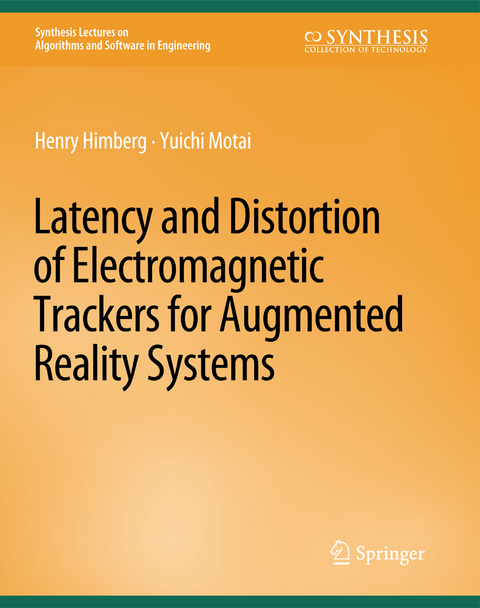
Latency and Distortion of Electromagnetic Trackers for Augmented Reality Systems
Springer International Publishing (Verlag)
978-3-031-00394-3 (ISBN)
Henry Himberg received the B.S. degree in electrical and computer engineering from Clarkson University, Potsdam, NY, in 1982, the M.S. degree from the University of Vermont, Burlington, in 2005, and the Ph.D. degree in electrical and computer engineering from Virginia Commonwealth University, Richmond, in 2010. He is currently a Staff Scientist with Polhemus, Colchester, VT. His research interests include signal processing, position/orientation measurement, and motion prediction.Yuichi Motai received the B.Eng. degree in instrumentation engineering from Keio University, Tokyo, Japan, in 1991, the M.Eng. degree in applied systems science from Kyoto University, Kyoto, Japan, in 1993, and the Ph.D. degree in electrical and computer engineering from Purdue University, West Lafayette, in 2002. He is currently an Associate Professor of Electrical and Computer Engineering at Virginia Commonwealth University, Richmond, VA. His research interests include the broad area of sensory intelligence, particularly in medical imaging, pattern recognition, computer vision, and sensory-based robotics
List of Tables.- Preface.- Acknowledgments.- Delta Quaternion Extended Kalman Filter.- Multiple Model Delta Quaternion Filter.- Interpolation Volume Calibration.- Conclusion.- References.- Authors' Biographies .
| Erscheinungsdatum | 06.06.2022 |
|---|---|
| Reihe/Serie | Synthesis Lectures on Algorithms and Software in Engineering |
| Zusatzinfo | XV, 173 p. |
| Verlagsort | Cham |
| Sprache | englisch |
| Maße | 191 x 235 mm |
| Gewicht | 372 g |
| Themenwelt | Mathematik / Informatik ► Informatik |
| Technik ► Elektrotechnik / Energietechnik | |
| ISBN-10 | 3-031-00394-2 / 3031003942 |
| ISBN-13 | 978-3-031-00394-3 / 9783031003943 |
| Zustand | Neuware |
| Haben Sie eine Frage zum Produkt? |
aus dem Bereich


